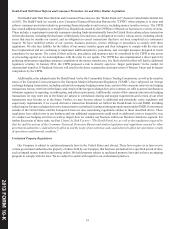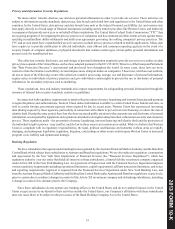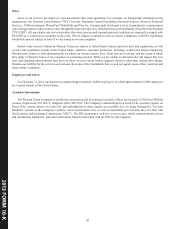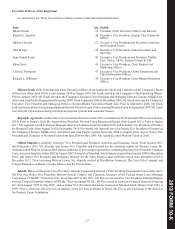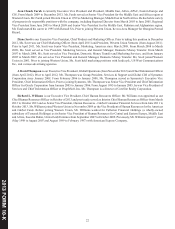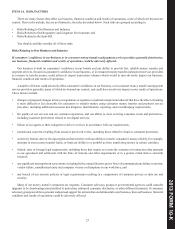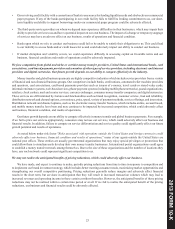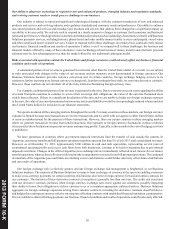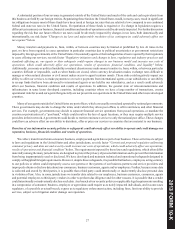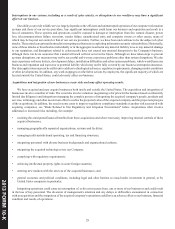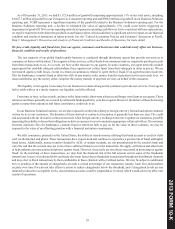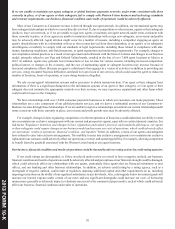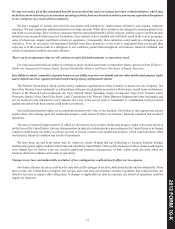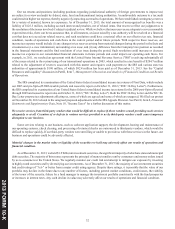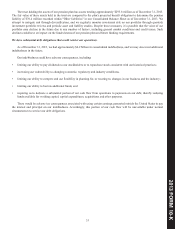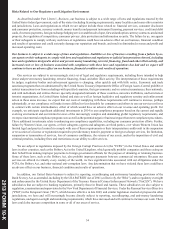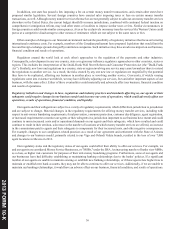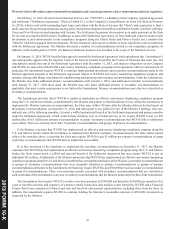Western Union 2013 Annual Report Download - page 138
Download and view the complete annual report
Please find page 138 of the 2013 Western Union annual report below. You can navigate through the pages in the report by either clicking on the pages listed below, or by using the keyword search tool below to find specific information within the annual report.
2013 FORM 10-K
28
Interruptions in our systems, including as a result of cyber attacks, or disruptions in our workforce may have a significant
effect on our business.
Our ability to provide reliable service largely depends on the efficient and uninterrupted operation of our computer information
systems and those of our service providers. Any significant interruptions could harm our business and reputation and result in a
loss of consumers. These systems and operations could be exposed to damage or interruption from fire, natural disaster, power
loss, telecommunications failure, terrorism, vendor failure, unauthorized entry and computer viruses or other causes, many of
which may be beyond our control or that of our service providers. Further, we have been and continue to be the subject of cyber
attacks. These attacks are primarily aimed at interrupting our business or exploiting information security vulnerabilities. Historically,
none of these attacks or breaches has individually or in the aggregate resulted in any material liability to us or any material damage
to our reputation, and disruptions related to cybersecurity have not caused any material disruption to the Company's business,
although there can be no assurance that a material breach will not occur in the future. Although we have taken steps to prevent
systems disruptions, our measures may not be successful and we may experience problems other than system disruptions. We also
may experience software defects, development delays, installation difficulties and other systems problems, which would harm our
business and reputation and expose us to potential liability which may not be fully covered by our business interruption insurance.
Our data applications may not be sufficient to address technological advances, regulatory requirements, changing market conditions
or other developments. In addition, any work stoppages or other labor actions by employees, the significant majority of which are
located outside the United States, could adversely affect our business.
Acquisitions and integration of new businesses create risks and may affect operating results.
We have acquired and may acquire businesses both inside and outside the United States. The acquisition and integration of
businesses involve a number of risks. The core risks involve valuation (negotiating a fair price for the business based on inherently
limited due diligence) and integration (managing the complex process of integrating the acquired company's people, products and
services, technology and other assets in an effort to realize the projected value of the acquired company and the projected synergies
of the acquisition). In addition, the need in some cases to improve regulatory compliance standards is another risk associated with
acquiring companies, see "Risks Related to Our Regulatory and Litigation Environment" below. Acquisitions often involve
additional or increased risks including, for example:
• realizing the anticipated financial benefits from these acquisitions and where necessary, improving internal controls of these
acquired businesses;
• managing geographically separated organizations, systems and facilities;
• managing multi-jurisdictional operating, tax and financing structures;
• integrating personnel with diverse business backgrounds and organizational cultures;
• integrating the acquired technologies into our Company;
• complying with regulatory requirements;
• enforcing intellectual property rights in some foreign countries;
• entering new markets with the services of the acquired businesses; and
• general economic and political conditions, including legal and other barriers to cross-border investment in general, or by
United States companies in particular.
Integrating operations could cause an interruption of, or divert resources from, one or more of our businesses and could result
in the loss of key personnel. The diversion of management's attention and any delays or difficulties encountered in connection
with an acquisition and the integration of the acquired company's operations could have an adverse effect on our business, financial
condition and results of operations.


